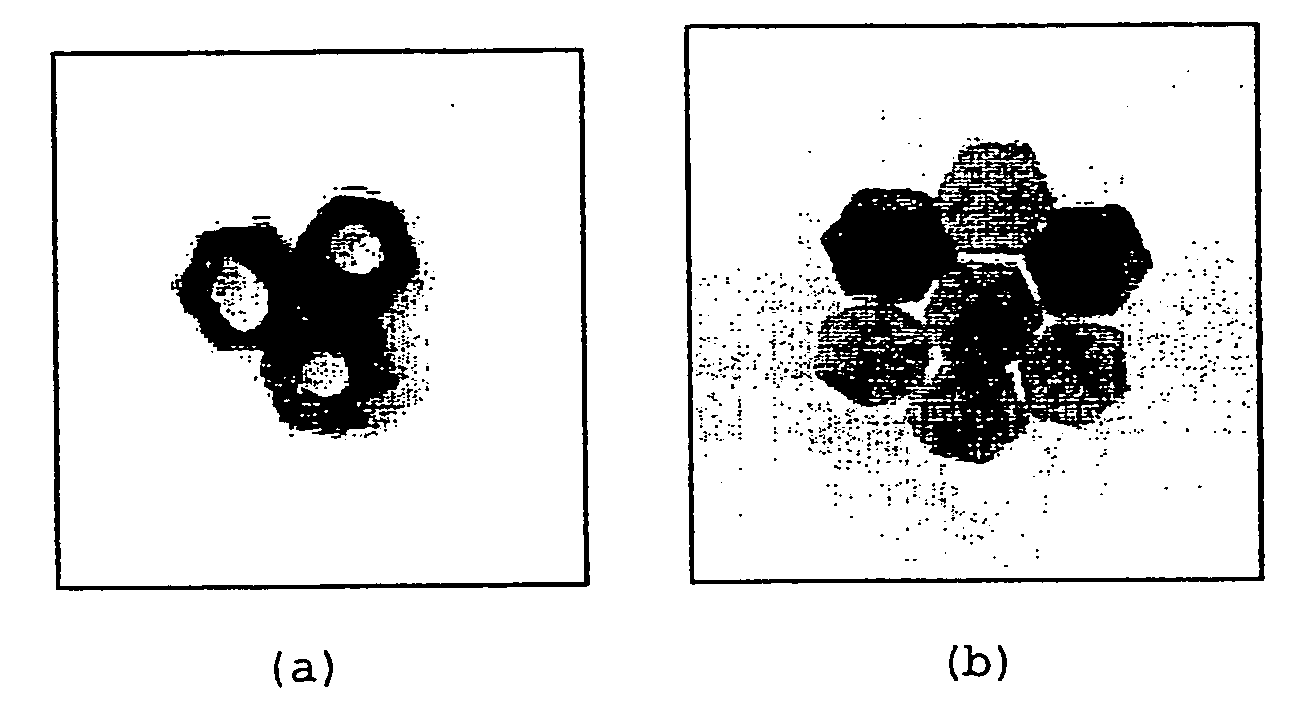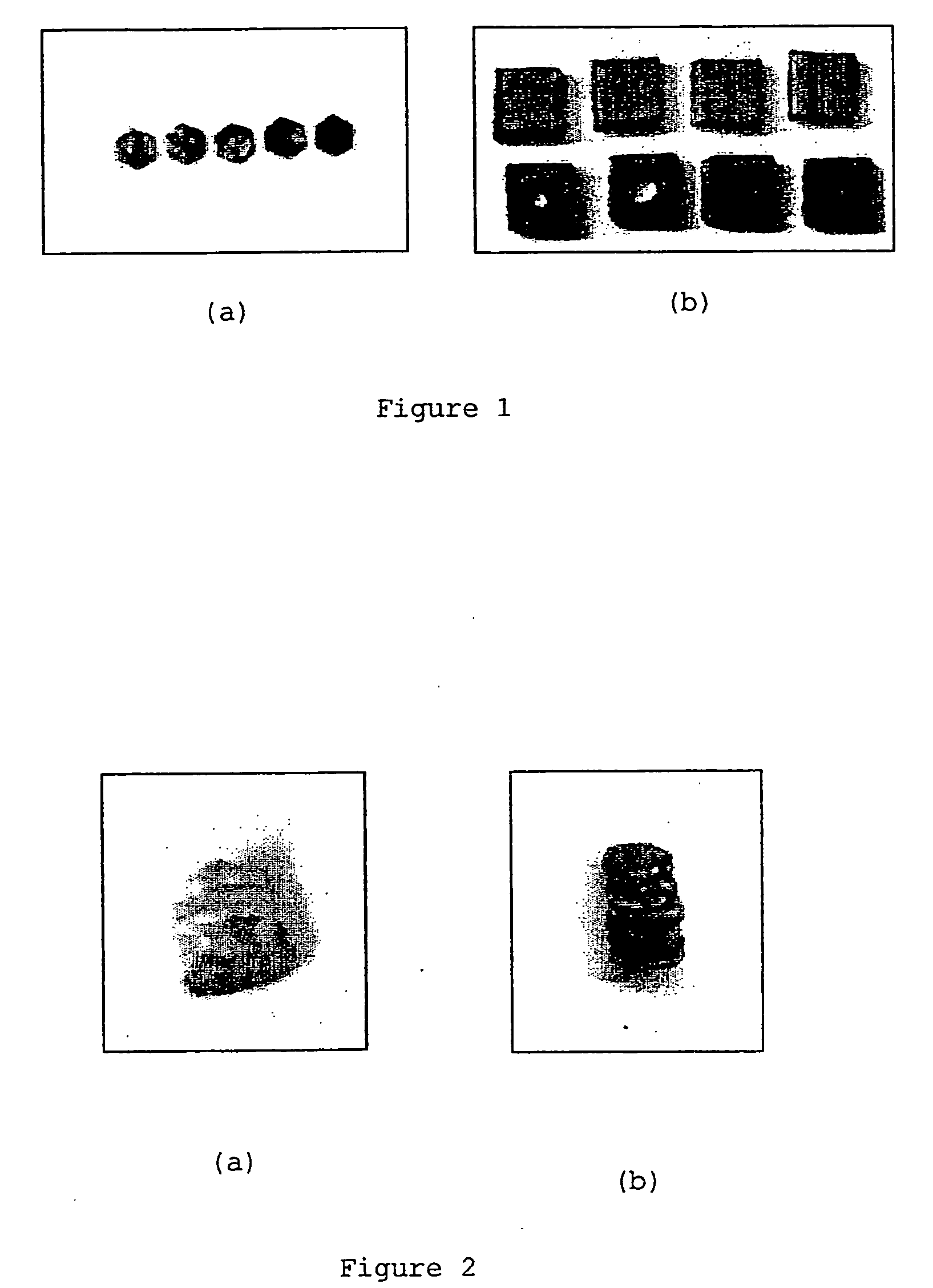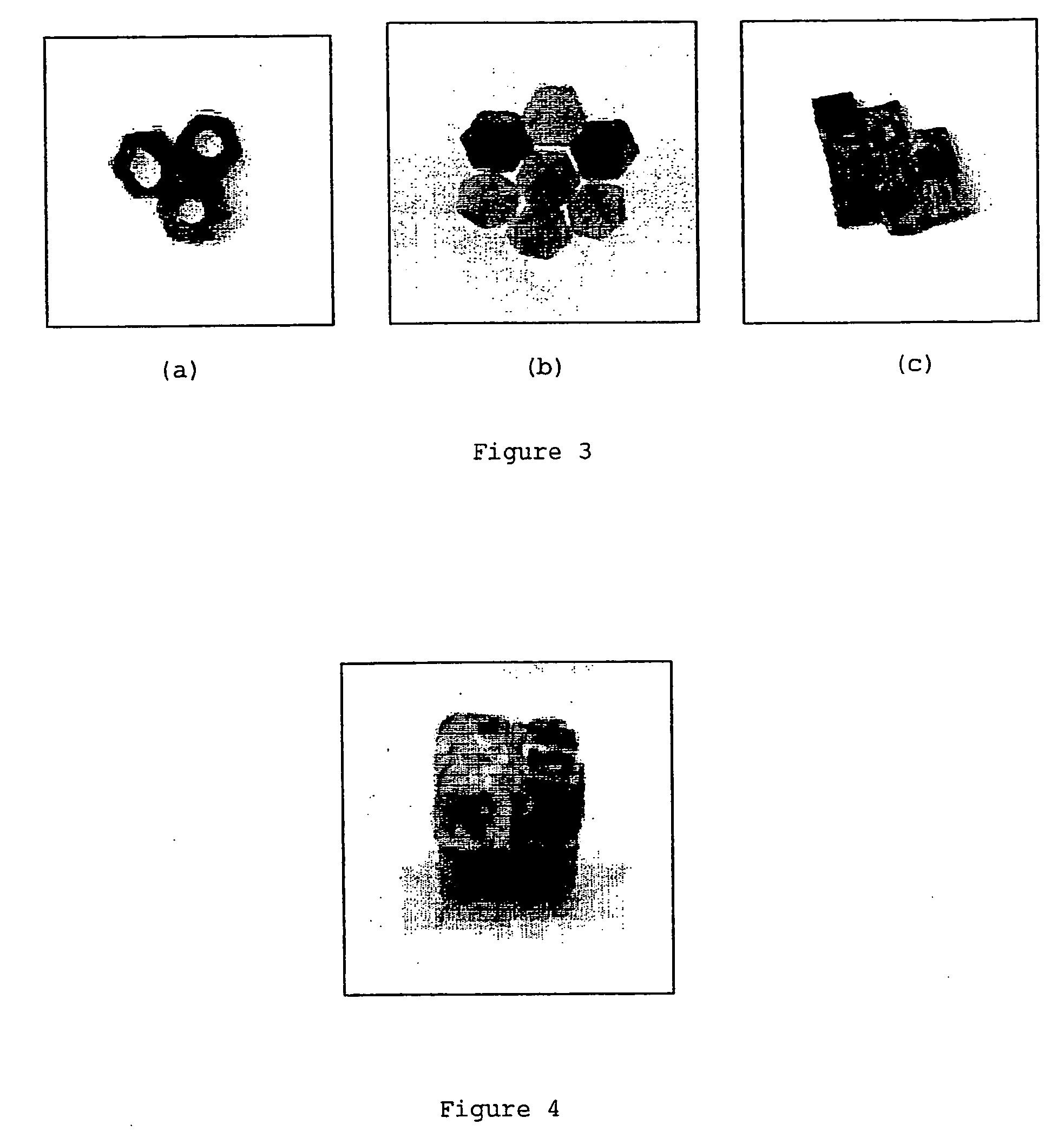Orthopaedic scaffolds for tissue engineering
a tissue engineering and orthopaedic technology, applied in the field of orthopaedic scaffolds for tissue engineering, can solve the problems of compromising bone strength, slow recovery time, and considerable patient discomfort, and achieve the effect of avoiding intricate molding processes and simple mixing
- Summary
- Abstract
- Description
- Claims
- Application Information
AI Technical Summary
Benefits of technology
Problems solved by technology
Method used
Image
Examples
example 1
Step 1
Synthesis of Individual Structures:
[0063] The individual composite building blocks (in the form of cubes or hexagons) were prepared by initially grinding polycaprolactone (PCL) with the porous powdered silicon material, obtained as described in WO01 / 95952, in various ratios by mass. The ratios prepared were as follows:
Mass of PCLMass of porousProductPowdersilicon powder1-D pentamer (FIG. 2b)0.3077 g0.0596 g2-D trimer (FIG. 3a)0.4181 g0.0827 g2-D hexamer (FIG. 3b)0.1652 g0.0338 g2-D octamer (FIG. 3c)0.6614 g0.1335 g3-D octamer (FIG. 4)0.6403 g0.1315 g
[0064] These composite powders were then poured into pre-formed PDMS molds with the desired 2-D shape (hexagonal or square). The molds were heated in an oven at 110° C. for −1 hr, and then cooled to room temperature. The solid composite blocks obtained could then be cut to the desired thickness between 0.8 mm to 4 mm.
Step 2
Preparation of Organized Assemblies:
[0065] The 2-D octamer illustrated in FIG. 3c was prepared as f...
example 2
Selective Enrichment of Selected Sites
[0067] Silicon powder material was spread on a rectangular glass slide. The glass slide was then placed over a hot plate and the temperature of the hot plate was adjusted to 200° C. Selected sites of composite building blocks (in the form of cubes or hexagons) prepared as described above were touched carefully with the hot silicon powder. The portion of the PCL polymer in contact with the hot silicon softened, leading to incorporation of the silicon material at those selected sites.
example 3
Calcification of BioSilicon Embedded in a Hollow PCL Cube
[0068] A composite structure composed of 11.4% mesoporous Si (w / w) was prepared by a method analogous to Example 1 and exposed to a solution of SBF at 37° C. for 14 days. Scanning electron microscopy was then used to examine the interior of a one dimensional channel in the structure. The image (FIG. 5) clearly showed numerous calcified deposits, the composition of which was confirmed in the corresponding energy dispersive x-ray spectrum. This result is in stark contrast to a control sample composed solely of PCL, where an absence of calcified deposits was evident on the surface of the material.
PUM
| Property | Measurement | Unit |
|---|---|---|
| melting point | aaaaa | aaaaa |
| mass ratio | aaaaa | aaaaa |
| width | aaaaa | aaaaa |
Abstract
Description
Claims
Application Information
 Login to View More
Login to View More - R&D
- Intellectual Property
- Life Sciences
- Materials
- Tech Scout
- Unparalleled Data Quality
- Higher Quality Content
- 60% Fewer Hallucinations
Browse by: Latest US Patents, China's latest patents, Technical Efficacy Thesaurus, Application Domain, Technology Topic, Popular Technical Reports.
© 2025 PatSnap. All rights reserved.Legal|Privacy policy|Modern Slavery Act Transparency Statement|Sitemap|About US| Contact US: help@patsnap.com



